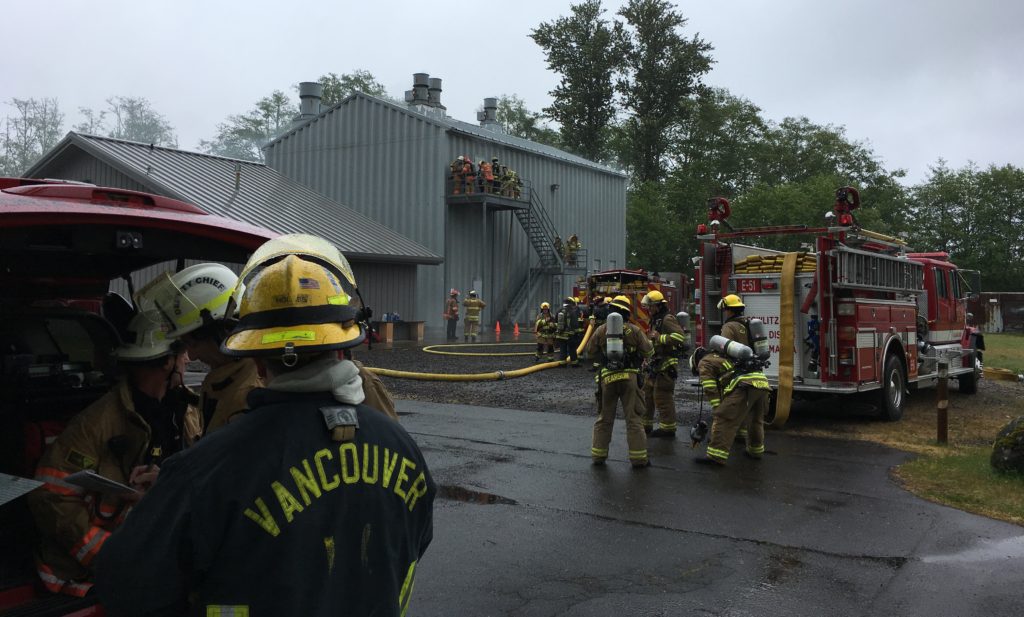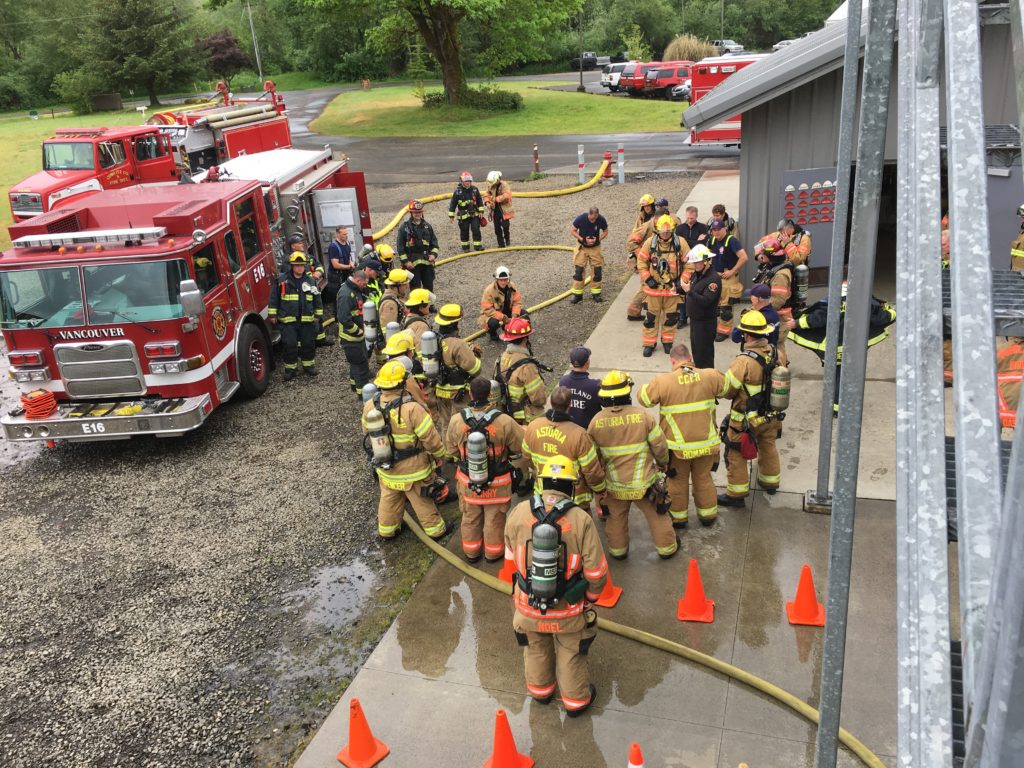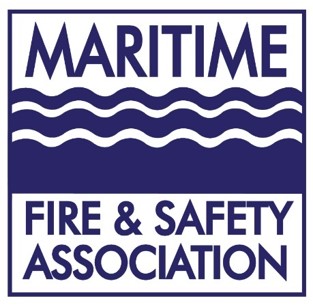
The second quarter 2019 Technician Level training was held at the live fire prop at the Marine Environmental Training Station (MERTS) Campus. This quarter’s training focused on enhancing the Technician’s decision making, confined space and rope rescues combined with live fire scenarios in an Immediate Danger to Life and Health (IDLH) environment. Invitees to enhance the scenario included Operations Level personnel, Command and Company Officers.
The prop utilizes a combination of natural gas fire and mineral oil smoke, allowing firefighters the opportunity to practice these skills in conditions that are impossible on a working vessel in port. Firefighters functioned in roles as vessel master and crew to give the scenarios an added level of realism by requiring crew interaction. Ongoing scenarios combined with needing to gain information through conversation forced firefighters into on-the-spot decision making. Participants rotated through roles in three distinct scenarios of varying complexity.
The first scenario started with dispatch information of a reported fire on a vessel. On arrival, they met with the vessel master and were informed that the fire was out but two crewmembers who had been engaged with the fire were in need of rescue. Firefighters, Company and Command Officers were tasked with collecting incident information and creating a plan to safely ensure that the fire was out, remained out, and to remove the downed crewmembers using the equipment, tools and personnel available to them on site. Firefighters dressed in full structural Personal Protective Equipment (PPE) and Self Contained Breathing Apparatus (SCBA), used stokes baskets, ropes, pulleys, change of direction techniques and brute force, to extricate the two victims from the prop.

The second scenario had the firefighters respond to a reported vessel fire at the port. On arrival they met with the vessel master and were given information that included the location of the fire, status of the crew and that the onboard extinguishing system was discharged but did not successfully operate as intended. The crewmembers were engaged in firefighting operations and there were simulated communication problems between the vessel master and the fire areas. This scenario forced the firefighters and officers into creating a plan to assess the effectiveness of the crew’s efforts, support their actions or, recommend withdraw from interior operations. Firefighters found that the crew’s actions were inappropriate, offensive operations should be discontinued, defensive tactics started and the fire spaces prepped for CO2 operations. Using the MFSA slice tool, extinguishing system and CO2 supplied by Airgas, a hole was cut into a simulated steel deck and CO2 injected into the space.

The third and final scenario involved the rescue of a contractor trapped by fire in the interior, bottom deck of the prop. The contractor was in a non-IDLH area but needed to be removed before the vessel’s CO2 system could be discharged and the fire extinguished. Firefighters found the contractor, put him in protective gear and SCBA and successfully removed him from the prop.

These were complicated and labor intense scenarios requiring a tremendous amount of planning, preparation and execution. The fact that there were no reported injuries speaks highly of the physical condition and skills of the participants. Everyone continues to work well and in a safe manner, together.
